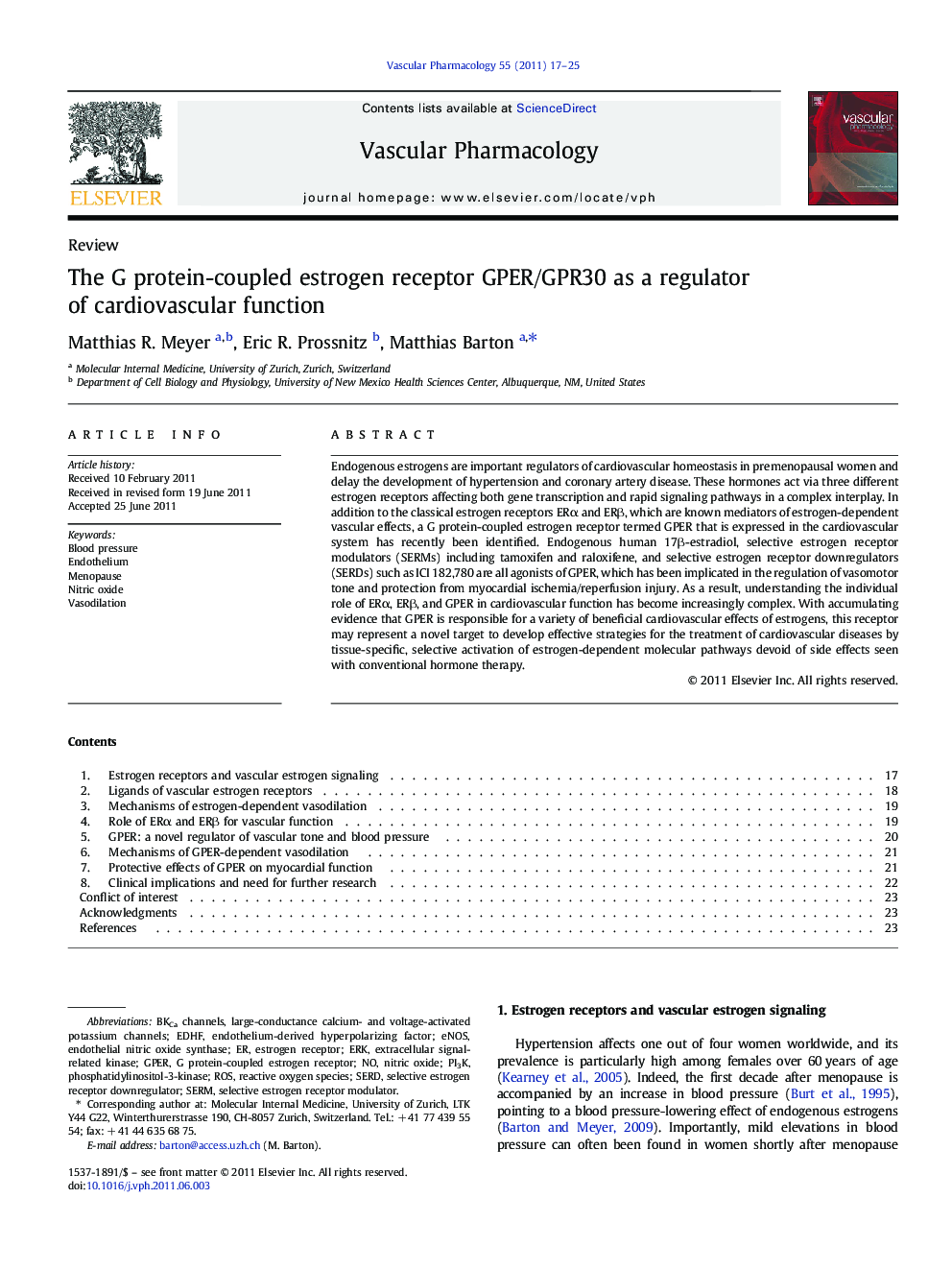| Article ID | Journal | Published Year | Pages | File Type |
|---|---|---|---|---|
| 2574391 | Vascular Pharmacology | 2011 | 9 Pages |
Endogenous estrogens are important regulators of cardiovascular homeostasis in premenopausal women and delay the development of hypertension and coronary artery disease. These hormones act via three different estrogen receptors affecting both gene transcription and rapid signaling pathways in a complex interplay. In addition to the classical estrogen receptors ERα and ERβ, which are known mediators of estrogen-dependent vascular effects, a G protein-coupled estrogen receptor termed GPER that is expressed in the cardiovascular system has recently been identified. Endogenous human 17β-estradiol, selective estrogen receptor modulators (SERMs) including tamoxifen and raloxifene, and selective estrogen receptor downregulators (SERDs) such as ICI 182,780 are all agonists of GPER, which has been implicated in the regulation of vasomotor tone and protection from myocardial ischemia/reperfusion injury. As a result, understanding the individual role of ERα, ERβ, and GPER in cardiovascular function has become increasingly complex. With accumulating evidence that GPER is responsible for a variety of beneficial cardiovascular effects of estrogens, this receptor may represent a novel target to develop effective strategies for the treatment of cardiovascular diseases by tissue-specific, selective activation of estrogen-dependent molecular pathways devoid of side effects seen with conventional hormone therapy.
Graphical abstractFigure optionsDownload full-size imageDownload as PowerPoint slide
